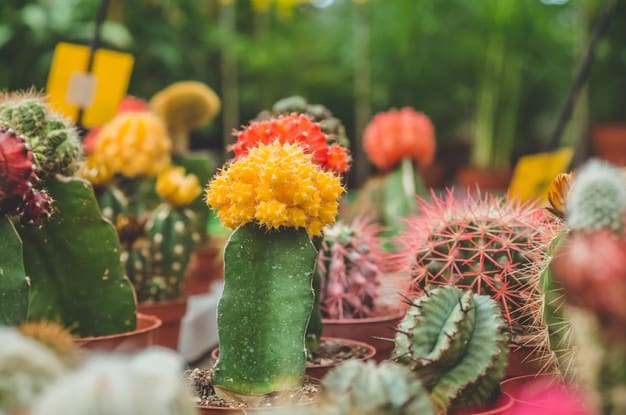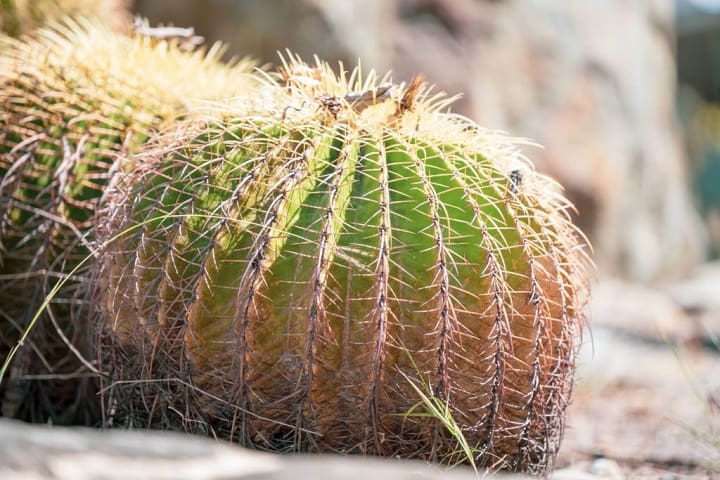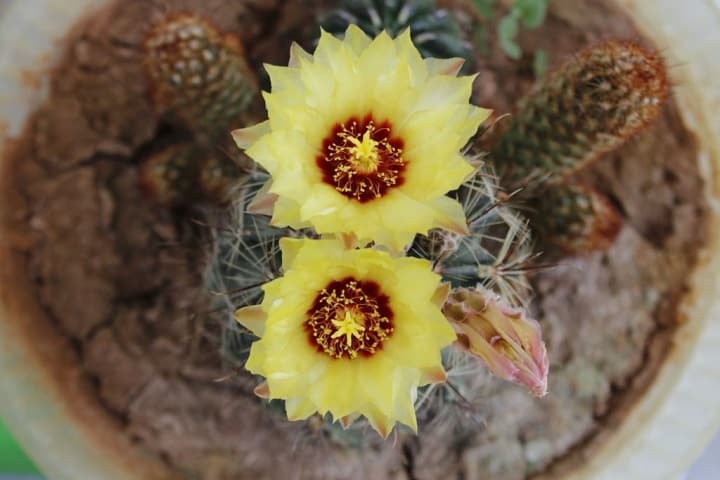Feeding Your Cacti: Fertilizer Selection Guide
If you’ve ever wondered how to keep your cacti healthy and vibrant, you’ve come to the right place. Cacti often thrive in harsh environments, relying on their unique characteristics to survive. However, to help them reach their full potential, proper fertilization is essential. In this guide, we will explore the importance of choosing the right fertilizer for your cacti (including the ideal cactus fertilizer ratio) and provide you with valuable insights to ensure optimal growth.

Contents
Cactus Fertilizer Needs
Even if you don’t have a green thumb, owning a cactus (Cactaceae) is often seen as an easy way to have a surviving plant. However, people still complain that even their cacti die on them. The good news is that taking care of these low-maintenance plants is not as difficult as it may seem. With a little knowledge, you can achieve a lot.
Cacti are slow growers, which is understandable since they originate from dry regions in America. To understand cacti and their needs, let’s take a glimpse into the world of their prickly companions: In their natural habitat, the soil is usually dry, and finding water is rare. Life’s rhythm is determined by the scarce availability of water. The surrounding vegetation is sparse, and there are few dead plant parts to turn into humus. As a result, the soil primarily consists of mineral components. To survive, cacti have to slowly and steadily grow and increase their biomass.
By keeping these conditions in mind, you already have the basic knowledge you need to ensure your cactus plants are happy and healthy.

This page contains affiliate links, and as an Amazon Associate, we earn from qualifying purchases which means we receive a small commission when you make a purchase, at zero cost to you.
When to Fertilize Cactus Plants
In the native habitats of cacti, rainfall is rare but can be intense when it does occur. During these heavy rainfalls, the cactus roots absorb nutrients along with the water. Therefore, fertilizing should be done through irrigation, using a fertilizer solution like Cactus Plus 2-7-7 from Schultz, which works well for cacti. During the growing season, which depends on the type of cactus, fertilize the soil every one to four weeks.
During winter, like most plants, cacti go through a resting period. That’s why the last fertilizer application of the year should be in August. The first dose in the following year is given in April or May, after the cactus has begun its growing season. The main fertilization period is in June and July, and during these two months, you should fertilize your cacti more frequently compared to May and August.
Recognizing Nutrient Deficiency Symptoms in Cacti
Cacti generally have low nutrient requirements, so it’s usually better to fertilize them with a little less rather than too much. Excessive fertilization can quickly result in soft tissue, causing potential harm.
Deficiency symptoms in cacti may not appear right away, so it’s important to find the right balance with fertilization. If you notice your cactus starting to lighten in color, it’s a clear sign of a potassium or nitrogen deficiency. This lightening is usually most noticeable at the base of the cactus, gradually becoming woody over time. A deficiency is often accompanied by a slower growth rate.

Phosphorus deficiency can also occur in cacti, but its signs are more subtle, mainly affecting the absence of blooms. Phosphorus plays a crucial role in the development of flowers and fruits.
What Is The Best Fertilizer For Cactus?
Did you know that there are over 100 different species of cacti around the world? It makes sense then that not all cacti have the same needs. This plant family is incredibly diverse. However, there are some important similarities when it comes to their nutritional requirements.

For cacti, nitrogen is extremely important. It helps them grow, but if there’s too much of it, it can result in soft tissue and make them more susceptible to diseases. So, the best cactus fertilizer should contain nitrogen, but in reasonable amounts.
Potassium is crucial for cacti as it helps them stay strong and stable. It also plays a vital role in storing water within their cells. Therefore, a good fertilizer should have enough potassium, ideally even more than nitrogen. Phosphorus is also more important than nitrogen when it comes to fertilization, especially for the formation of flowers and fruits.

In addition to various essential trace nutrients, the best cactus fertilizer includes nitrogen, phosphorus, and potassium. The main difference from conventional fertilizers lies in the ratio. While regular fertilizers usually contain more nitrogen than phosphorus and potassium, it’s the opposite for cactus fertilizers. A good cactus fertilizer has as much or even less nitrogen compared to phosphorus and potassium.
Lastly, let’s not forget about the soil pH value. Cacti thrive when the pH value is between 6 and 7. This is when they feel their best. If the pH value is too acidic or too alkaline, some nutrients become less available to the plants. So, maintaining the right pH level is crucial for their overall health and well-being.
Organic Fertilizer for Cactus: The Right Approach
If you prefer using organic fertilizer in your soil, you might be disappointed with cacti. In their native habitats, there is very little organic matter available for plant growth. Few plant parts decompose to form humus, and animals find it challenging to find food, resulting in limited manure. As a result, cacti primarily obtain their nutrients from the mineral components of the soil.
For organic fertilization, it is recommended to use a liquid fertilizer like Cactus Plus 2-7-7 from Schultz. By mixing it into the irrigation water, you can easily provide valuable nutrients to the already-moistened cactus soil. An advantage of cacti is that there is no risk of nutrients leaching out due to infrequent watering.
Mineral Fertilizers for Cactus
Any fertilizer with the right nutrient ratio can be used as a mineral fertilizer. Cactus-specific fertilizer blends naturally meet this requirement but are often more expensive compared to other fertilizers. Mineral salts can also be dissolved in the irrigation water and used as fertilizer. However, remember to moisten the soil beforehand before using irrigation water enriched with fertilizer.
Home Remedies as Cactus Fertilizer
Interestingly, there is an organic fertilizer that works well for cacti: coffee grounds. Although coffee grounds are not very nutrient-rich, which makes it difficult to over-fertilize, they contain mainly phosphorus and potassium, which perfectly fulfill the needs of cacti. As a bonus, coffee grounds are acidic, helping to counteract excessively high pH levels. This home remedy can come in handy, especially when using water that contains a lot of calcium.
How to Make the Best Fertilizer for Cactus Plants
Since cacti are naturally adapted to a mineral environment, it’s not easy to make your own fertilizer. You would need to acquire individual nutrients like nitrogen, phosphorus, potassium, as well as micronutrients such as copper and zinc, and mix them in the correct ratio. However, this mixing process requires special conditions, and unfortunately, it won’t save you money because household quantities of individual nutrients can be quite expensive.
Even though cacti are generally low-maintenance plants, there are still a few important things to consider. To learn how to properly care for your cacti, please refer to our articles on indoor and outdoor cactus plant care.
